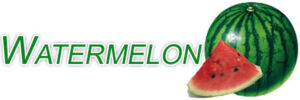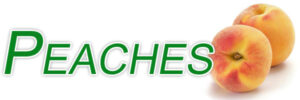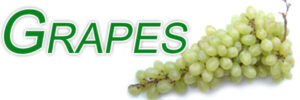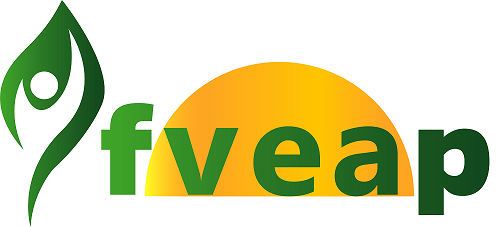Fruits

Balochistan has the largest area under fruits in Pakistan as nearly one million tons of fruits are annually produced from 0.23 million hectares. In this way, Balochistan’s share in country’s fruit area and production is 32.6 per cent and 17.4 per cent, respectively. The production of deciduous fruits (particularly apple) in Balochistan has a special significance among other fruit growing areas. This is because the environmental conditions are relative far more suitable for the production of apple. Therefore, apple is the first largest planted fruit in Balochistan and it is second most produced fruit after dates in the province. Apple is grown in highlands of Balochistan and it covers 0.101 million hectares with a production of 0.224 million tones having retail value of about Rs6.7 billion. The Tur-Kulu (Red Delicious) and Shin-Kulu (Golden Delicious) are the famous varieties for their very attractive color and taste throughout Pakistan.
The apple contains 80 to 85% of water. Approximately 5% of protein or nitrogenous material. 10 to 15% of acids and salts. A fresh apple is rich in vitamins and is amongst the most valuable of the anti-scorbutic fruits for relieving scurvy. All apples contain a varying amount of the organic acids, malic acid and gallic acid, and an abundance of salts of both potash and soda, as well as salts of lime, magnesium and iron. Apple come in all shades of reds, greens, and yellows. Apples are fat, sodium and cholesterol free. Apple float because 25% of their volume is air. Apples have five seed pockets each with a seed. To get the full value of an apple, it should be eaten unpeeled as the valuable acids and salts of the Apple in and just below the skin.

MANGO- KING OF FRUITS
Because of its excellent flavor, attractive fragrance, beautiful shades of color, delicious taste and healthful value, the mango is now recognized as one of the best fruit in the world market, a veritable King of Fruits, as it is known in South Asia. Pakistan is among the leading mango producers as it is the original and natural habitat of mangoes.
Pakistani mangoes are high in fiber, low in calories and contain a small amount of carbohydrates, calcium, iron, potassium and a little protein; they are rich in vitamins A, B and C and also contain other antioxidant vitamins. Mangoes have more carotenoids than most other fruits and that helps word off colds and reduces the risk of cancer and heart disease.
Mango the Magnificent
There are a number of varieties of this fruit to choose from including Sindhri, Langra, Dusehri, Anwar Retaul, Gulab Khas, Sunera, Chaunsa, Black Chaunsa, White Chaunsa, Began Phali, Fajri etc. All of these diverse varieties have distinctive colors, aromas and tastes. It is indeed amazing that so many unique tastes come from the same fruit originating from so close proximity.
1. SINDHRI
For many Sindhri mango is the epitome of perfection in mangoes. It is oval in shape with a beautiful yellow colour, very low fiber and an incomparable aroma. Availability is from 20th May to 30th June.
2. CHAUNSA
Known for being very sweet, firm and low fibre. Its available between mid June to the end of August. Chaunsa is one of a kind and is much sought after by its aficionados.
3. FAJRI
Fajri is a large size mango. Fajri has little aroma but the pulp is fiberless. Availability is from 15th June to 5th August.
4. DUSEHRI
Medium size fruit with greenish yellow colour. Dusehri is slightly aromatic. Pulp is fiberless. Availability is from 20th May to 10th July.
OTHER VARIETIES OF MANGO
GULAB KHAS
Availability: 1st June to 15th June
LANGRA
Availability: 20th May to 10th July
SUNERA, BEGAN PHALI
Availability: 25th June to 30th July
BLACK CHAUNSA, WHITE CHAUNSA
Availability: 15th August to 1st October

KINNOW
Kinnow is a fruit with a close relation to the Mandarin yet has a unique taste. Grown in Pakistan and demanded all over the world, the juicy, soft, scented and refreshing Kinnow offers ease of peeling and juice content is unequalled by citrus fruit anywhere else in the world. This is primarily due to the soil constituency and climate under which it grows. This environment is available in Punjab, Pakistan from November to March. It is widely used for juices, squashes, jams, jellies and marmalade.

Pears are one of the ancient fruits, with a history that pre-dates Christianity by 2,000 years. Some of the earliest writings place pears origin in China, and there are records of pear orchards in Greece in Homer’s time. Homer aptly referred to them as a “Gift from the Gods”. Pears belong to the species Pyrus communis. Mother Nature protected the easily bruised pear by making it better when picked while firm. Unlike most fruit, pears improve in both texture and flavor after they are picked. Store unripe pears at room temperature, ripe pears may be refrigerated.As a fruit, fresh pears have no cholesterol, sodium or saturated fat. They offer a natural, quick source of energy, due to the presence of natural sugars. Pears are nutrient dense- they are high in fiber, a good source of vitamin C and provide the important mineral potassium all for under 100 calories per medium pear.
A medium pear contains 198 mg of potassium. Although it is an important mineral lost easily through dehydration or perspiration brought on by active lifestyles or strenuous exercise, potassium is necessary for maintaining heartbeat, muscle contraction, nerve transmission, as well as carbohydrate and protein metabolism.

In terms of world production, the banana (genus Musa) is one of the top three tropical fruits, along with citrus and pineapple. Banana serves as a staple food in some countries of Africa, Asia, Central and South America.
It has been extensively cultivated in Sindh province, due to suitable environment and soil conditions, Bananas are cut from the plants when green and are transported to markets. It is now a common practice to ripen the banana through ethylene in cold rooms prior the sale to consumer. Blemished banana is desirable to large extent in the country.

Watermelon is not only great on a hot summer day, this delectable thirst-quencher may also help quench the inflammation that contributes to conditions like asthma, atherosclerosis, diabetes, colon cancer, and arthritis.Sweet, juicy watermelon is actually packed with some of the most important antioxidants in nature. Watermelon is an excellent source of vitamin C and a very good source of vitamin A, notably through its concentration of beta-carotene. Pink watermelon is also a source of the potent carotenoid antioxidant, lycopene. These powerful antioxidants travel through the body neutralizing free radicals. Free radicals are substances in the body that can cause a great deal of damage. They are able to oxidize cholesterol, making it stick to blood vessel walls, where it can lead to heart attack or stroke. They can add to the severity of asthma attacks by causing airways to clamp down and close.
They can increase the inflammation that occurs in osteoarthritis and rheumatoid arthritis and cause most of the joint damage that occurs in these conditions, and they can damage cells lining the colon, turning them into cancer cells. Fortunately, vitamin C and beta-carotene are very good at getting rid of these harmful molecules and can therefore prevent the damage they would otherwise cause. As a matter of fact, high intakes of vitamin C and beta-carotene have been shown in a number of scientific studies to reduce the risk of heart disease, reduce the airway spasm that occurs in asthma, reduce the risk of colon cancer, and alleviate some of the symptoms of osteoarthritis and rheumatoid arthritis. A cup of watermelon provides 24.3% of the daily value for vitamin C, and, through its beta-carotene, 11.1% of the DV for vitamin A.
Watermelon is rich in the B vitamins necessary for energy production. Our food ranking system also qualified watermelon as a very good source of vitamin B6 and a good source of vitamin B1, magnesium, and potassium. Part of this high ranking was due to the higher nutrient richness of watermelon. Because this food has a higher water content and lower calorie content than many other fruits (a whole cup of watermelon contains only 48 calories), it delivers more nutrients per calorie-an outstanding health benefit.

Peaches (Prunus persica), like apricots, belong to the genus Prunus of Rosaceate (rose) family having decorative pink blossoms and a juicy, sweet drupe fruit. They are categorized as “stone fruit”, their seed being enclosed in a hard, stone-like endocarp. Peach originated in China, later introduced into Persia. Commercially grown peaches are generally distinguished as clingstone (pit adheres to flesh) or freestone (pit relatively free of the flesh).
China is the leading peach producing country with about 37% share of the total world production followed by the United States and Italy. More than half of this consumption was as fresh; this is likely to increase because of the popularity of fresh-cut fruits in recent years. In Pakistan the environment of N.W.F.P is quite favourable for peach production.

A date fruit is the product of a date palm, a tree native to Northern Africa and the Middle East, although it is also cultivated in other parts of the world. In addition to being eaten fresh, the date fruit is dried and eaten whole as a snack or included in an assortment of desserts. Many regional Middle Eastern cuisines incorporate dates, as do Mediterranean cuisines like those of Italy and Greece. Dried dates are usually readily available in most markets, and fresh dates can be found in specialty markets in season.Dates have a big advantage over other fruits and that is that dates can keep for a long time. They do need to be refrigerated or they can be frozen. Refrigerated they will keep for up to a year, and frozen up to five years. It is good to keep them in airtight containers to preserve the moisture.Dates are rich in minerals and relatively high in fiber.
varieties:-
1.Medjool
2.Deglet Noor

The common guava (Psidium guajava L.) is the most important member of the Myrtaceae family. It is reported to have originated in Central America but now has thoroughly naturalized throughout the tropics and subtropics. By virtue of its commercial and nutritional values, guava is considered a common man’s fruit and can be rightly termed as the “apple of the tropics.” Guava is of commercial importance in about 58 countries. Pakistan is ranked third among guava producing countries.
Guava being a hardly plant, required less irrigation water and is not affected by extremes of hot or cold temperatures, but cannot tolerate frost.

Grapefruit may be the less popular citrus choice when compared to its sweeter cousin, the orange, but grapefruit possesses health promoting compounds that may help fight cold symptoms, prevent certain forms of cancer and help prevent heart disease.Grapefruit is an excellent source of vitamin C, a vitamin that helps to support the immune system. Vitamin C-rich foods like grapefruit may help reduce cold symptoms or severity of cold symptoms; over 20 scientific studies have suggested that vitamin C is a cold-fighter.
Vitamin C also prevents the free radical damage that triggers the inflammatory cascade, and is therefore also associated with reduced severity of inflammatory conditions, such as asthma, osteoarthritis, and rheumatoid arthritis. As free radicals can oxidize cholesterol and lead to plaques that may rupture causing heart attacks or stroke, vitamin C is beneficial to promoting cardiovascular health.

Grape production and wine making originated in Asia (Armenia, Azerbaijan, and Iran). In those regions, small-berry varieties were available and were produced 4000-5000 years before Christ. Nowadays, grapes are produced on about 8 million ha, with 70% being processed in Europe.
The fruit of the grape contains important and valuable nutrients. Its vitamin — B1, B2, B6 and folic acid contents are remarkable. As far as minerals are concerned, the level of potassium, calcium, magnesium, and microelements is substantial. Both the fruit flesh and the skin of red grapes contain high amounts of flavonoids, such as anthocyanides, flavonols, and tannins, responsible for the red color of the berries. In contrast to world grapes consumption trend, only a small proportion of the grape is processed. There are two main groups of grape varieties: white and red.

FVEAP specializes in the production and trading of agricultural products worldwide. We have a range of agriculture products we harvest from our own farms and handle them carefully till delivery to our client’s premises.
Office Address
Address:
Lawyer Colony, Qaboola Road, Arifwala
Email:
Telephone :
+92 322-6474-444
